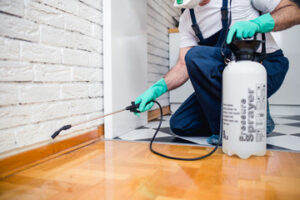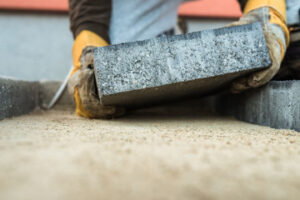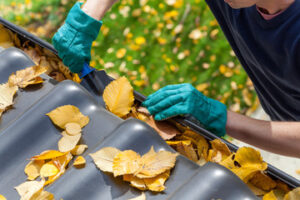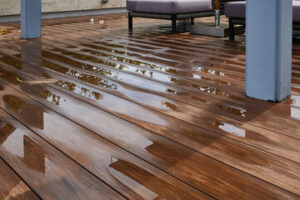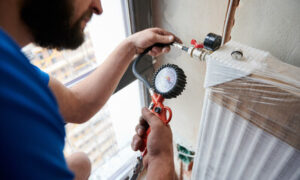Fences protect children and pets, secure property values, and increase privacy. However, they can also create a significant home improvement project that requires careful planning and construction.
Before beginning any fencing projects, underground utility lines should be located for FREE. This will avoid costly and dangerous accidents. Click https://rcfence1.com/ to learn more.

Cedar is a high-quality wood that naturally resists the elements and repels insects. This makes it an attractive and durable fence option. While cedar fences are generally more expensive than pine or cypress, they last longer and require less maintenance. Cedar can also be stained or sealed to preserve its natural beauty.
Cedar’s distinctive appearance stands out in any landscape. Its warm coloration, unique grain patterns, and knots add depth and beauty to your home’s curb appeal. It’sCedar is a natural choice that complements most architectural styles, whether you prefer a more rustic or modern look. Cedar fences have a timeless elegance that adds value to your home and increases its resale value.
In addition to its natural resistance to weathering and insect infestation, cedar has remarkable dimensional stability. This means it has a lower risk of warping and shrinking over time, which can shorten the lifespan of other types of fencing materials. Cedar is also more environmentally friendly than pressure-treated pine because it does not need any chemical preservatives to protect it from the elements.
While cedar offers a number of benefits, it’s important to note that some companies misrepresent their product. If you’re shopping for a cedar fence, be sure that you are getting genuine Western Red Cedar. Some fence companies may use #2 or lower grade wood to cut costs and increase their profits. It’s easy to tell if you are getting authentic cedar based on the staining options available.
If you choose a stain for your cedar fence, be sure to choose a clear sealer that blocks UV rays. Cedar has a tendency to dramatically darken in sunlight, which can affect its appearance and deteriorate the quality of the wood. To avoid this, consider choosing a darker color for your stain or applying a UV-blocking preservative to your fence every few years.
Cypress
Choosing the right fence for your property requires careful consideration. You want something that looks good, is durable and meets your security needs. You should also consider the cost of installation and maintenance. In addition, it’s important to consult with your neighbors about your fencing plans. You don’t want to build something that obstructs their views.
A professional fence company can help you choose the best materials for your property. They can create a custom fence design that fits your style and budget. Moreover, they can install fence gates and provide other home improvement services. They can also make repairs to existing fences. You can find a local fence company by performing an online search. Then, you can review the company’s products and services to determine whether it is right for your project.
When searching for a fence company, it is important to find one that is licensed and insured. This will protect you against fraud and poor workmanship. You can also check the company’s references. If you’re unsure of the quality of their work, ask to see examples of past projects.
Before you start building your fence, it’s crucial to know what kind of wood you need. Cedar and cypress are two of the most popular choices for fencing. They are both durable, but they differ in how they look. Both are good choices for a privacy fence, but cedar is more attractive than cypress. In addition, cedar is easier to maintain than cypress.
Another factor to consider is the length and height of your fence. It’s important to keep in mind that taller fences require more material than shorter ones. You should also calculate the number of posts you’ll need to support the fence. Once you have this information, you can start installing the posts and adding fence boards.
Fence installation is a complex process, and it’s important to hire a professional. A reputable fence company will have a team of skilled and knowledgeable technicians who can install your fence quickly and efficiently. In addition, they’ll use high-quality materials and tools to ensure a long-lasting, beautiful finish.
Pine
Pine is a popular choice for fencing due to its affordability and availability. It is also easy to work with and can be painted or stained to match your home’s exterior. However, unlike cedar, pinewood is not very resistant to water and rot, so you will need to stain your fence regularly to protect it from the elements.
The best wood to use for your fence depends on your location and local weather conditions. Cedar and cypress are great for wet climates, while pine and oak are better suited to drier areas. The type of wood you choose should also take into account your budget and the look you want to achieve.
While the initial investment for a cedar fence is higher than that of a pine fence, it will last longer and require less maintenance. Cedar is also more resistant to pests and fungus than pine, making it a better option for homeowners who are concerned about the impact of their home on wildlife.
Cedar also has a smoother texture than pine and is lighter, so it is easier to install. If you are not a skilled carpenter, this may be a significant factor when choosing the material for your fence. Cedar also has a pleasant scent, while pine is not as fragrant.
Pine wood comes in several different shades, from very white to yellow. This makes it easier to stain in the color of your choice, and you will not need as many coats as you would with other types of wood. It is important to note that pine is not as moisture-resistant as cedar, so if you live in a humid area with regular rainfall, it is recommended that you get treated pine.
If you opt for a pressure-treated pine wood fence, the process will help to increase its longevity and resistance to rot, water damage, and insects such as termites. This treatment is done by forcing preservatives deep into the pine wood, which will make it much more resilient to the weather elements. As with all wood fences, you will need to perform routine inspections and re-stain or repaint it on a regular basis.
Redwood
Redwood is a versatile material that can be used to create a range of fence styles. From lattice fences to picket, board-on-board, and panel fencing, each style offers unique benefits that cater to specific aesthetic preferences and functional needs. Its versatility makes it a popular choice for residential or commercial properties. Regardless of the type of redwood fence you choose, it is important to install it properly to ensure maximum durability and longevity.
When properly cared for, a wood fence can last up to 25 years or more. But like any other material, wood is susceptible to damage from severe weather conditions and other natural events. A wood fence repair professional can help restore security and curb appeal to a worn or damaged fence.
One of the most common types of fence repairs is due to insect infestation. These pests can cause damage to the structural integrity of a wood fence, and can even lead to complete collapse. Regular fence maintenance can prevent pests from causing major problems, but if pests have already damaged your fence, a professional can provide timely and effective repairs.
A good redwood fence can add value to your home, and it can also increase your property’s overall value. However, it is essential to hire a professional contractor to ensure that the work will be done right. It is also a good idea to get a written contract or detailed quote before hiring a company to do the job. This should include a description of the work to be done, what materials will be used, and the estimated cost.
Before you begin your project, it is important to know what types of fencing materials are available and how much each will cost. Spruce is a good budget-conscious option for those on a tighter budget, and can be purchased for as little as $3 to $10 per linear foot. However, spruce is not as durable as other options, and may warp in damp climates.
When selecting the type of wood for your redwood fence, you should consider its strength and visual appearance. Redwood is a beautiful choice for its natural color and grain pattern, which complements most property styles. It is also easy to paint, which gives it added versatility. If you choose to paint your fence, be sure to use a high quality primer and paint, as some cheap products can peel or chip.
